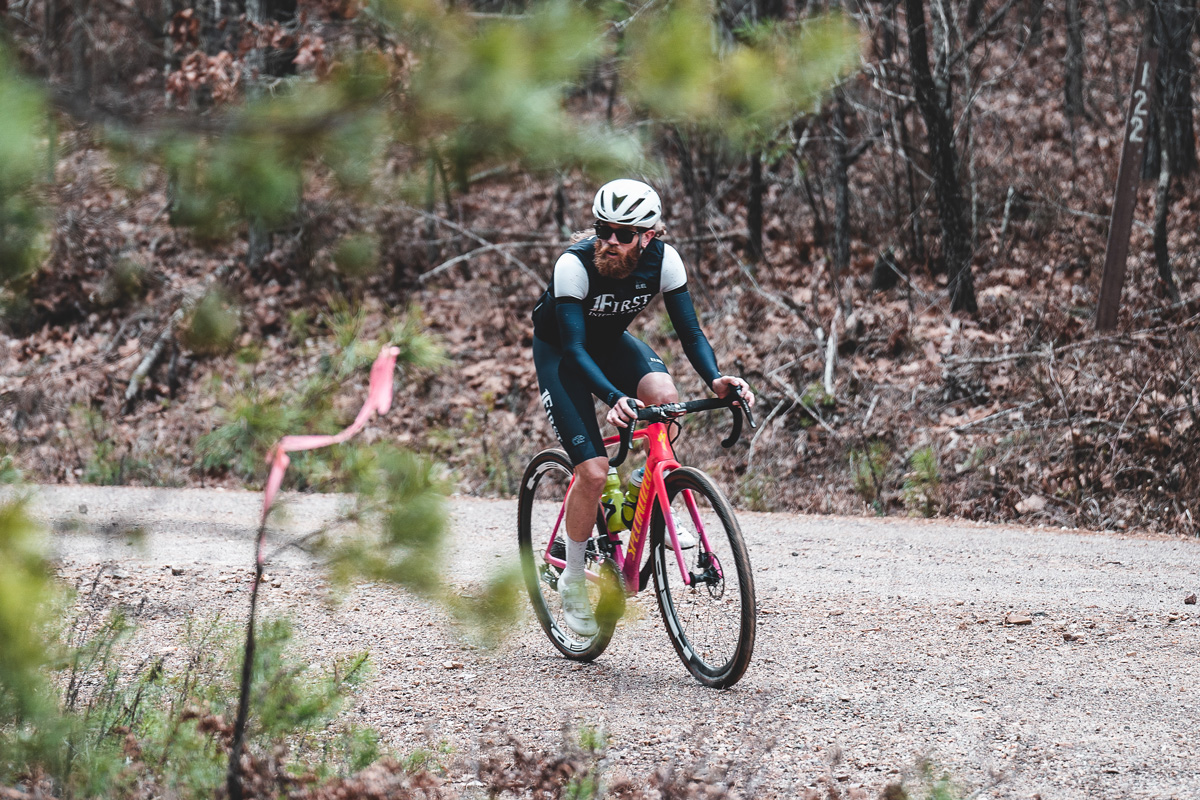How to Ride a Bike
(alone)
The joy of riding in solitary.
By Bryce Ward | Photography by Kai Caddy

FIND HARMONY: Riding alone is a good time to pay attention to your position on the bike.
Over the years I’ve met many cyclists who have told me, in one way or another, that they don’t enjoy riding alone — some even dread it and struggle to find the motivation to ride without the company of others.
As someone who once shared this sentiment but has since learned to appreciate the solitary form of cycling, I want to share the approach that has worked for me. It is by no means the only way, but if you give it a try, I have a feeling it will work for you, too.
First things first: Leave the ear buds at home. Music, podcasts and interruptions from Siri won’t do you any good with this approach. If you use a bike computer, turn it to “Do Not Disturb” and hide as many numbers from the front screen as you can — power, heart rate, speed, time, etc. Switch to the map view, or even better, place the computer in your back pocket, right next to the phone you won’t need. Then pick a direction and push off toward quiet, familiar roads.
Pay close attention to how your body is positioned on the bike. Are you centered on the saddle? Move around until it feels like you are. Do you feel your sit bones? If not, engage your glutes and roll your hips back until you find them. Push down on the pedals from your hips, not your quads. Activate your core and try to exert equal effort through each leg.
When you feel stable and centered, move your attention farther up your body. Is your back hunched? Raise your ribcage and pull back your shoulders — posture matters on the bike, too. Do you feel pressure through your arms? Allocate more of your weight to the saddle. Grip the bars firmly with your hands, but let your arms relax. If your neck is tight, drop your shoulders down slightly.
When you finally feel that your body is in harmony with the bicycle, direct your focus toward your breath. If you can, breathe in and out through your nose. If you can’t, dial down your pace until your breath is under your control.
If you encounter a hill, do not fight it. Crawl up it if gravity wants you to. Every once in a while, lift your body off the saddle, shift your weight over the crankset, and let the handlebars sway freely beneath you.
Look at the landscape. Really stare at it, like a film director scouting a location for an important scene, or a writer searching for metaphors.
First things first:
Leave the ear buds at home.

NO THOUGHTS: Focus on your senses.
Listen to the air rush past your face. Feel the wind colliding with your arms. Notice the beads of sweat rolling across your skin and watch as they fall to the earth.
Inevitably and often, your mind will wander from your senses. Despite your best efforts, you will suddenly find yourself thinking. Whenever this happens, redirect your focus as quickly as you can to something outside your head. Use your breath as an anchor to reality and resist the urge to float away in reverie — the road to hell is cobbled with thoughts.
When you hear a neurotic scream from the window of a passing automobile, let the wind carry it away. Misery is a virus that spreads through thoughts, and it cannot survive without a host. For the full duration of your ride, remain stubbornly fixed to your senses.
When the contours of hills no longer interest you, listen to the love songs of chirping crickets. When you forget about your breath, notice the pressure beneath your feet. When you slip into another thought, reach for your bottle and savor the taste of replenishment. When the pastures lose their luster, welcome the strange scents of the earth into your nose. Cycle from one sensation to the next while your legs push you ever forward into the present moment.
The bicycle, though a simple machine, has an uncanny ability to turn our attention toward the thing we spend so much time and energy trying to ignore: plain, unadulterated existence. It demands our eyes and ears to stay latched onto our surroundings. It urges our hands to stay wrapped around its reins. And even if, in an act of bold defiance, we reach back for that small rectangular portal, we are unable to linger in its trance for long.
The bicycle, more effectively than any machine I know, deprives us of our most comfortable distractions and leaves us stranded with the sensations of the natural world. If we retreat from this mundane reality, we will never find the peace we unknowingly search for. But if we can learn to be as content with it as the grazing cattle and soaring birds, then we at least have a chance.
We forget that we too are animals. We don’t need much to be happy. The only thing that separates us from them is an addiction to thoughts. If you think less and notice more, you will eventually discover that you don’t mind riding alone — you may even start looking forward to it.
The bicycle deprives us of our most
comfortable distractions.

REVEL IN NATURE: Don’t miss the beauty of your surroundings.


